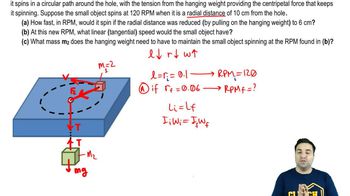Here are the essential concepts you must grasp in order to answer the question correctly.
Laser Oscillation Modes
In laser physics, oscillation modes refer to the specific standing wave patterns that can form within the laser cavity. Each mode is characterized by a quantum number, which indicates the number of wavelengths fitting into the cavity length. The m=100,000 mode signifies a high-frequency oscillation, which is crucial for determining the laser's wavelength and frequency.
Recommended video:
Unknown Wavelength of Laser through Double Slit
Wavelength and Frequency Relationship
The wavelength and frequency of a wave are inversely related through the equation c = λf, where c is the speed of light, λ is the wavelength, and f is the frequency. This relationship means that as the wavelength increases, the frequency decreases, and vice versa. Understanding this relationship is essential for calculating the wavelength and frequency of the CO2 laser beam.
Recommended video:
Circumference, Period, and Frequency in UCM
Cavity Length and Wavelength
The cavity length of a laser influences the wavelengths of light that can resonate within it. The fundamental wavelength can be determined using the formula λ = 2L/m, where L is the cavity length and m is the mode number. For the CO2 laser with a cavity length of 53.00 cm and m=100,000, this formula allows us to calculate the specific wavelength of the emitted laser light.
Recommended video:
Spinning on a string of variable length



